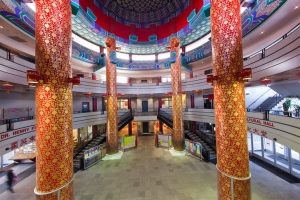
Calgary is a stunning city, and its geographical importance is exceptional. This city is comprised primarily of community minded-people. This allows local residents and international tourists to exchange thoughts and experiences in a supportive environment.
So, what’s so fascinating about CalgaryChinese? For starters, there are 120-plus world languages spoken in Calgary, which is symbolic of a highly socialized culture
Geographical importance
Calgary is a city in Alberta, western Canada. With 1,306,784 occupants and a metro population of 1,481,806 (2021), Calgary is the third largest city and fourth-largest identified metropolitan area in Canada.
CalgaryChinese is located at the confluence of the Bow and Elbow streams in southern Calgary. This area separates the Canadian Grasslands from the Rough Mountain Lower regions (around 80 kilometres), and east of the Canadian Rockies’ front it extends approximately 299 kilometres. The south of Edmonton is around 150 kilometres north of the U.S. Borderline.
Calgary is prominent in areas of banking, energy, transportation, film and TV, innovation, production and aeronautics. Among the 800 biggest manufacturing sites in Canada, the Calgary Metropolis is the second-largest based on number of workplaces. Among 2015 urban communities Calgary had the highest per-capita number of business tycoons. Additionally, Calgary is known as the Canadian city holding the Olympic Winter Games record for attendance in 1988.
A few important features of Calgary
♦ 7.7 million people visit CalgaryChinese each year and contribute revenue of up to 2 billion $ to the economy.
♦ The city continues to be known as Cow Town in view of its expansive grass fields.
♦ The 10-day Calgary Rodeo is a celebrated outdoor event that attracts about 100,000 people annually. This fun-filled festival includes music concerts, exhibitions, food stalls and many exciting things to see and do. This event is organized every July at Calgary Stampede.
♦ Calgarian’s average age of 36.7 years makes it a youthful city. As a consequence, sports and music events are hugely popular, regularly-scheduled events.
♦ The city has greater diversity than other Canadian cities, with 120 plus languages spoken in the city.
Early settlement in Calgary
Pre-Clovis individuals are believed to have migrated to the region around 11,000 years ago. The Blackfoot, Piegan, and Tsuu Tina were among the first inhabitants, were part of the Blackfoot Alliance, and lived here for thousands of years before European settlers appeared.
David Thompson, a map maker, spent winter in 1787 with a gathering of Piegans. He set up camp next to the Bow Waterway and was the main European known to have entered the area and brokered for the Hudson’s Inlet Organization. Later, in 1873, John Glenn became the first-known European pilgrim to visit the area.
The recent 2 decades of Calgary
The mid-1980s financial breakdown hugely affected Calgary, which utilized a sizable number of individuals in the oil area, and the unemployment rate was reduced. Yet, the economy was recuperating constantly nearby. Calgary quickly inferred that it couldn’t keep on putting such areas of strength on oil and gas. Subsequently, the city has become altogether more monetarily and socially distinct.
During this downfall, Calgary’s change from a medium-sized, unexceptional grassland city to a critical, multicultural centre point happened. Because of this shift, the city facilitated the principal Winter Games in Canada in 1988. For all intents and purposes, the city entered the worldwide stage because of the outcome of these Games.
Street geography of Calgary
Calgary is located at the Canadian Grasslands’ gathering point and the Canadian Rockies’ lower regions. The Parkland District and the Prairies Regular Locale are close to the city. The level of the air terminal and downtown Calgary, separately, is 1,076 meters. In 201 the city had an area of 825.29 km2.
Two main rivers cross the city. The Bow Waterway passes from the west and further toward the south which is the greater of the two. The Elbow Stream starts in the south and runs north until joining the Bow Waterway near midtown at the old Stronghold Calgary site.
Increased growth in the oil sector
Although oil was first found in Alberta around in 1902, the area’s oil industry didn’t take off until 1947, when amounts were tracked down near Leduc. Calgary before long turned into the focal point of the going with oil blast. The 1973 Bedouin Oil Ban raised oil costs, which prompted development in the city’s economy.
From 1971 (403,000) to 1989 (675,000), the population grew by 272,000. During the next 18 years (1990-2007) the popular grew by an additional 345,000 to total 1,020,000 residents. During these population developmental cycles, signature buildings were constructed, and what was once a one-level downtown area has become modernized with high-rise buildings.
Conclusion
Calgary is developing and progressing in every sector, including transportation, business manufacturing, and new advancements within the city center. You should definitely put Calgary on your list of places to visit and experience this vibrant Canadian city for yourself.
Shift Frequency © 2022 – Rewind to the
historical importance of Calgary
